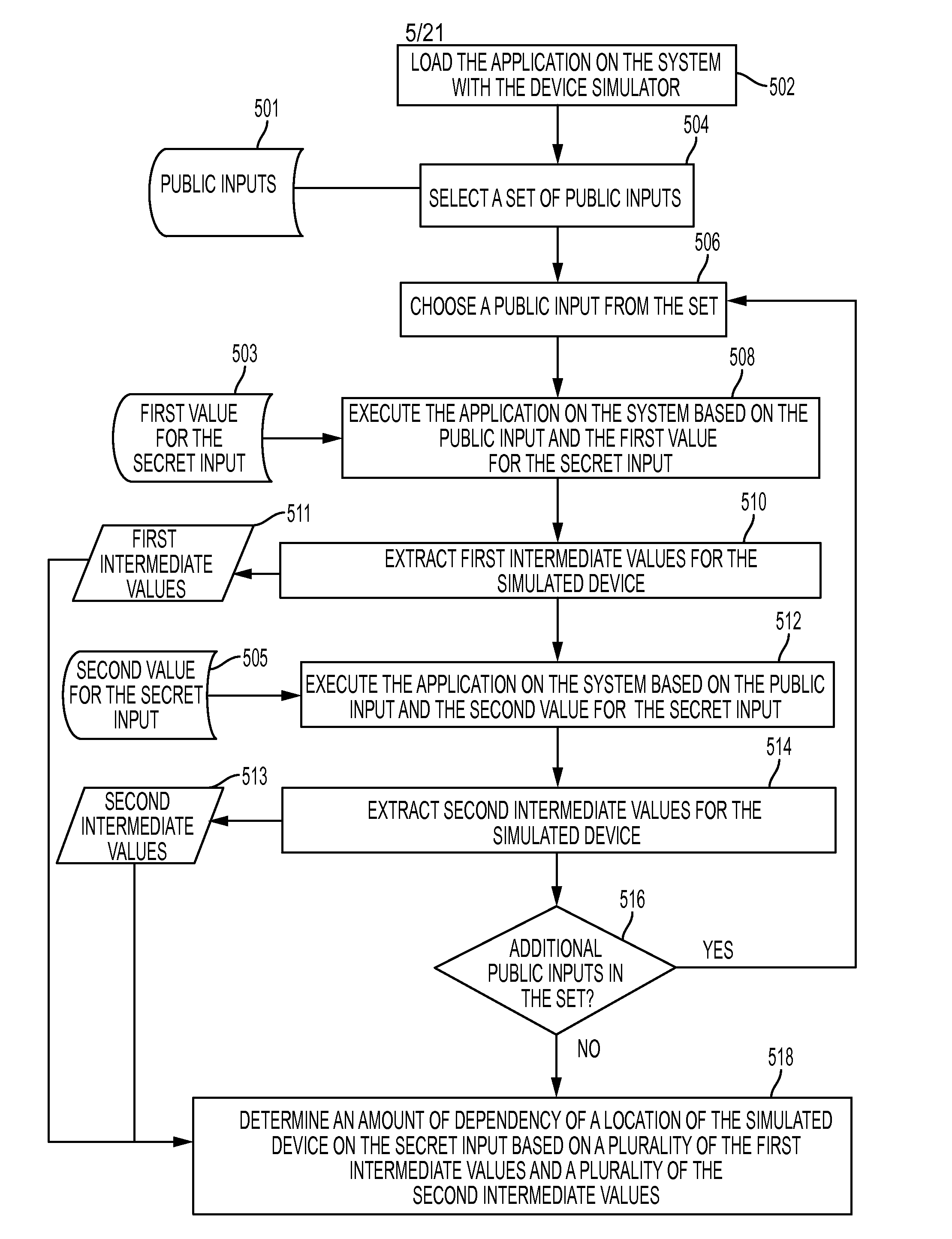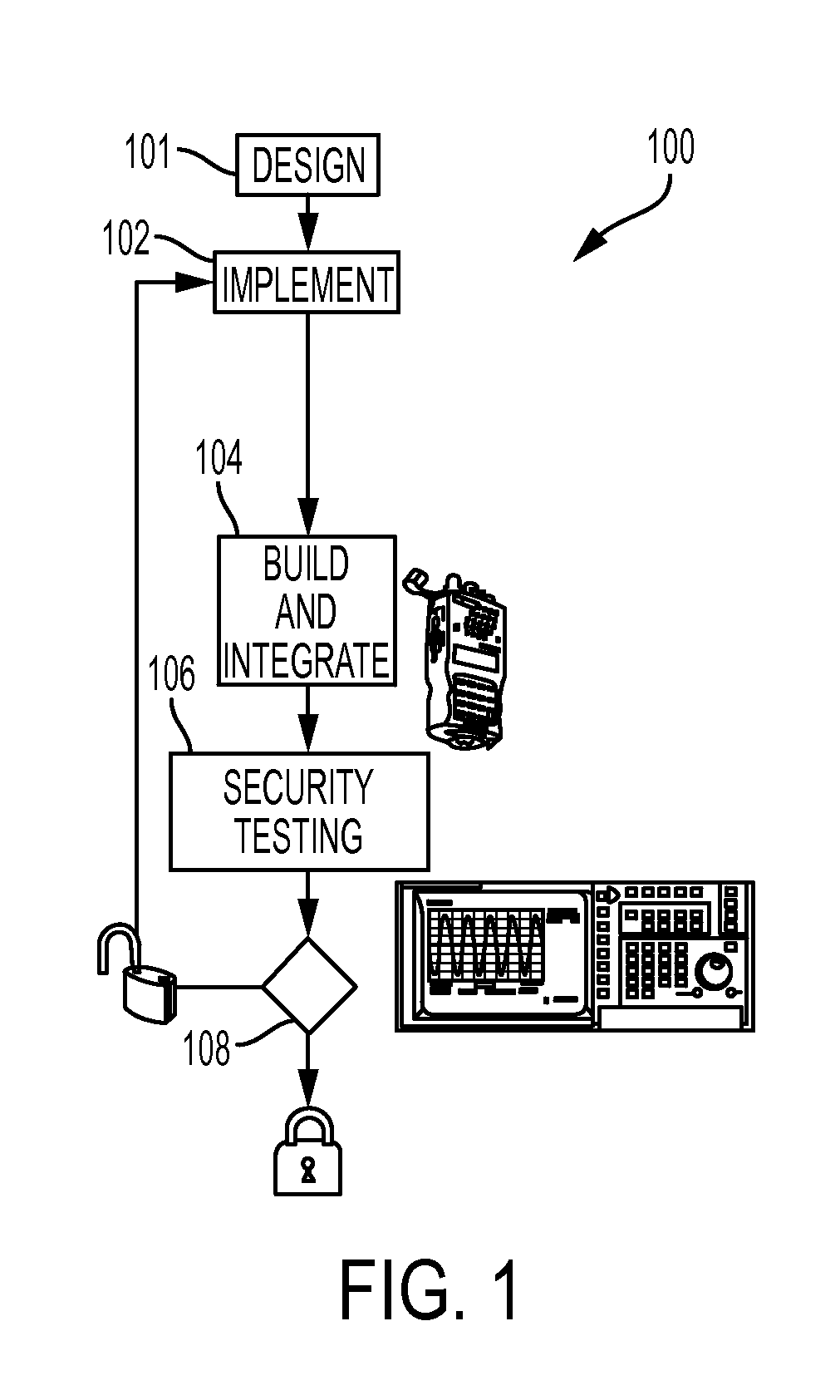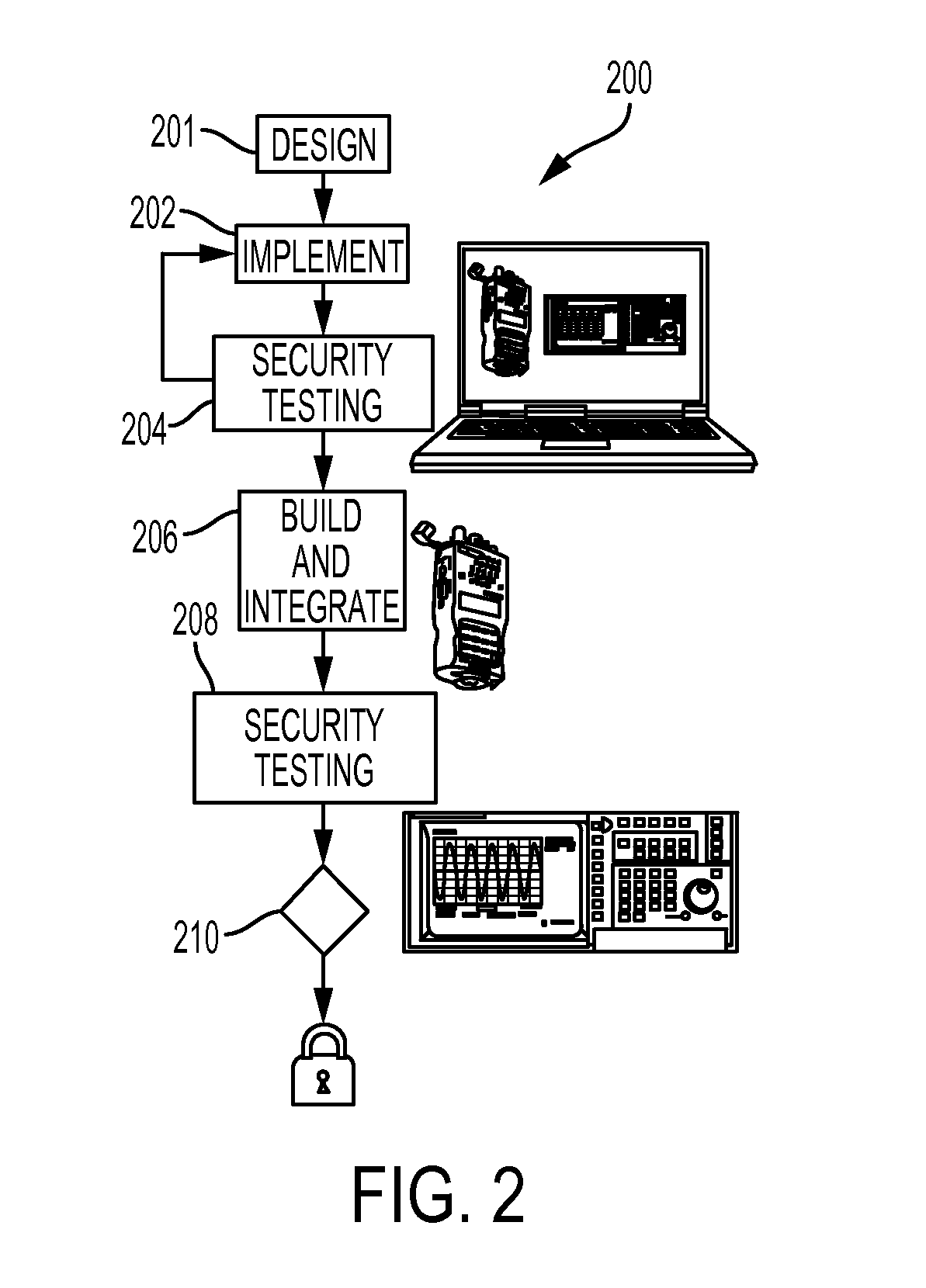Side-channel leakage evaluator and analysis kit
a side channel and leakage analysis technology, applied in the field of side channel attacks of cryptographic systems, can solve the problems of difficult testing and verification of effectiveness, major security threat to systems performing cryptographic operations, and inability to guarantee that all potential vulnerabilities will be identified by experienced testers
- Summary
- Abstract
- Description
- Claims
- Application Information
AI Technical Summary
Benefits of technology
Problems solved by technology
Method used
Image
Examples
Embodiment Construction
[0057]Described herein are methods, systems, and devices that analyze the SCA vulnerability of an application by executing the application on a device simulator and determining whether a value of a simulated device component depends on a secret input to the application. A dependency may indicate that the application causes leaking information that, when detected by an SCA, can be exploited to extract the secret input. According to some embodiments, the application includes encryption functionality and the secret input is an encryption key. According to some embodiments, the value of a simulated device component can be a value of a register immediately after the execution of an instruction.
[0058]According to some embodiments, an application designed to be run on a device is loaded on a computer system that includes a simulator for the device. The application is executed based on one or more inputs that may include a secret input such as an encryption key. Values of simulated states o...
PUM
 Login to View More
Login to View More Abstract
Description
Claims
Application Information
 Login to View More
Login to View More - R&D
- Intellectual Property
- Life Sciences
- Materials
- Tech Scout
- Unparalleled Data Quality
- Higher Quality Content
- 60% Fewer Hallucinations
Browse by: Latest US Patents, China's latest patents, Technical Efficacy Thesaurus, Application Domain, Technology Topic, Popular Technical Reports.
© 2025 PatSnap. All rights reserved.Legal|Privacy policy|Modern Slavery Act Transparency Statement|Sitemap|About US| Contact US: help@patsnap.com



